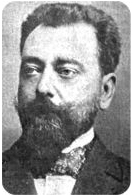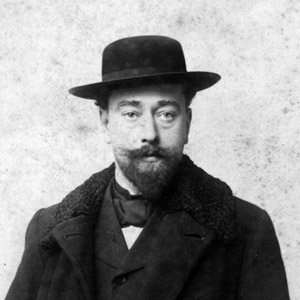Paul Romaine Chevré
First Class Passenger

“Captain Smith cried out, 'my luck has turned,' and then shot himself. I saw him fall against the canvas railing on the bridge and disappear.”
According to Encyclopedia Titanica "Mr Paul Romaine Chevré was born in Brussels of French parents in 1867. His father ran a foundry, and at an early age Chevré demonstrated an apptitude for sculpture."(8.) The 45 year old boarded the Titanic at Cherbourg as a first class passenger, destined for Canada.
"On the evening of the disaster, Chevré was playing cards in the Café Parisien with Pierre Maréchal and Alfred Fernand Omont and Lucien P. Smith. When the ship stopped, Chevré thought it too cold to go outside to investigate, and asked a Steward to open a porthole and have a look. Even though the accident didn't appear to be serious, Chevré and Omont pocketed their cards and decided to get into one of the first lifeboats being lowered, No. 7. Some of their companions chided them for getting into the boat, but Chevré wasn't taking any chances. He and Omont described their rescue in an article that appeared in Le Matin and The Times." (8.)
The account for which is most famous for was synidicated to a number of English newspapers:
"Captain Smith got band back to the big dining room to play when Titanic struck. They had finished their evening program some time before. Mr Chevré saw that the lowering of the boats which took along the people on the ship appeared not to be appreciating the danger they were in. Chevré said an officer asked him to get into a lifeboat to set an example. This he did, and was followed by five or six other girls, two of whom he believed to be the Missess Fortunes of Winnipeg. Mr Chevré stated that a few minutes before the ship sank Captain Smith cried out, "my luck has turned," and then shot himself. I saw him fall against the canvas railing on the bridge and disappear."

Paul Romaine Chevré, (French wikipedia)
However, according to Encyclopedia Titanica "It was a dramatic read, but a total fabrication by a reporter who either didn't understand French or made the whole thing up to sell papers. Chevré arrived in Montreal on April 22, and stormed into the French language daily, La Presse, to set the record straight. Everything that had been written about him in English, he complained was "a tissue of lies. He denied saying Captain Smith had committed suicide....The Herald, which printed the original story insisted it certainly did not fake Chevré's account, but allowed that since its reporter didn't speak French very well, "he might have misunderstood Mr Chevré's rapid fire narrative." (8.)
In fact it seems shortly thereafter he tried to undo his negative description by praising the heroism of Titanic's sailors:
Heroism of the English sailors who went down with the ill-fated Titanic was the one thing which most impressed Paul Cheveret, the Canadian sculptor, who left the steamship in one of the first boats lowered. He said that there was no sign of cowardice among the male passengers or crew. "I was off the Titanic before there was an real panic," Mr. Cheveret said. " I will take my hat off to the English seamen who went down with their ship."(Worcester Evening Gazette, Saturday 20th April 1912)
Since there seems to be no doubt that Chevré departed in lifeboat no.7 and also the fact that he seemingly wanted to retract his statement regarding Smith's suicide it seems quite unlikely that saw what he original said. However The New York Herald did stand by it's story and the translation issues or a possible misunderstanding does not necessarily rule out what he saw. To this day, the truth about this account is unknown.
Verdict: